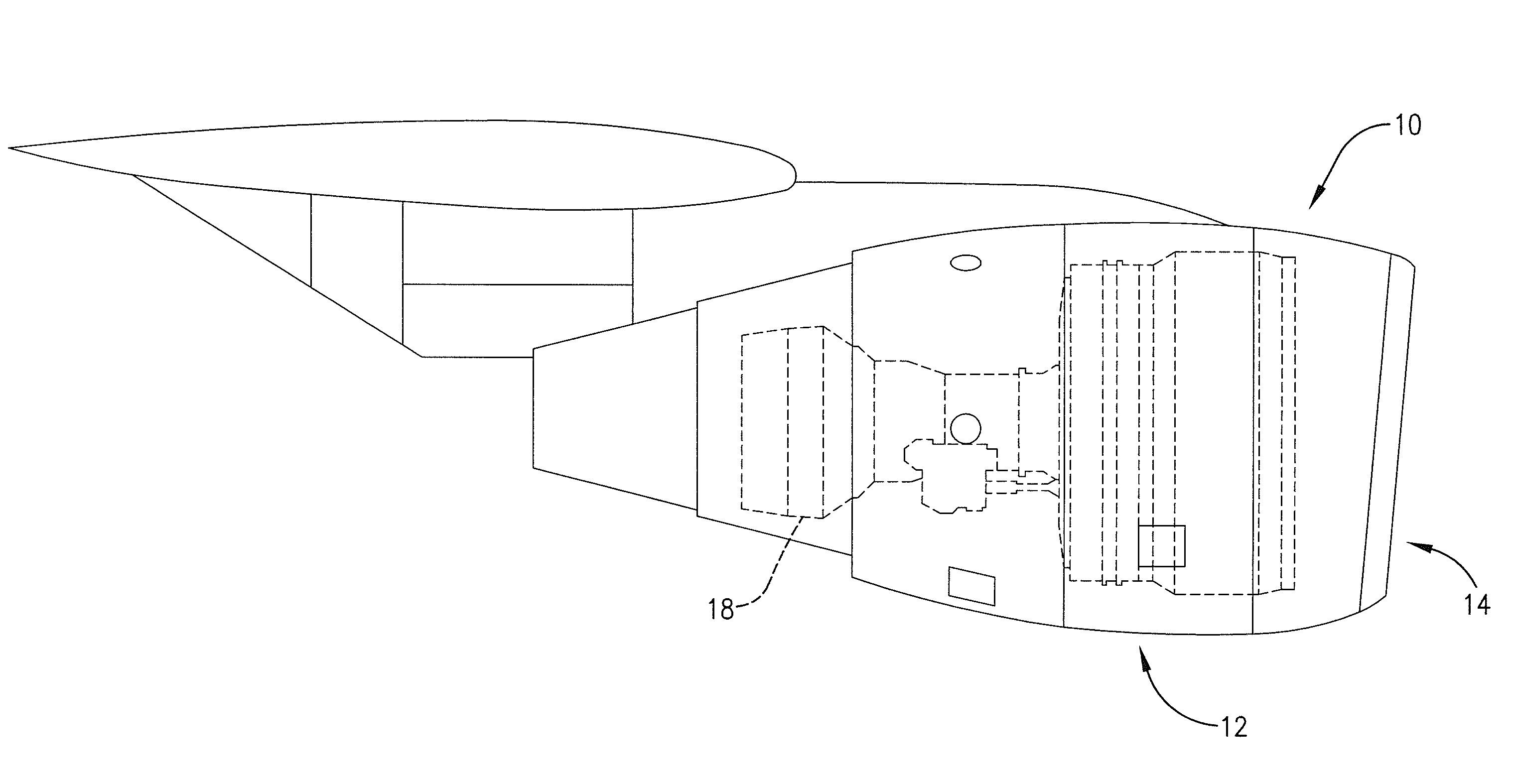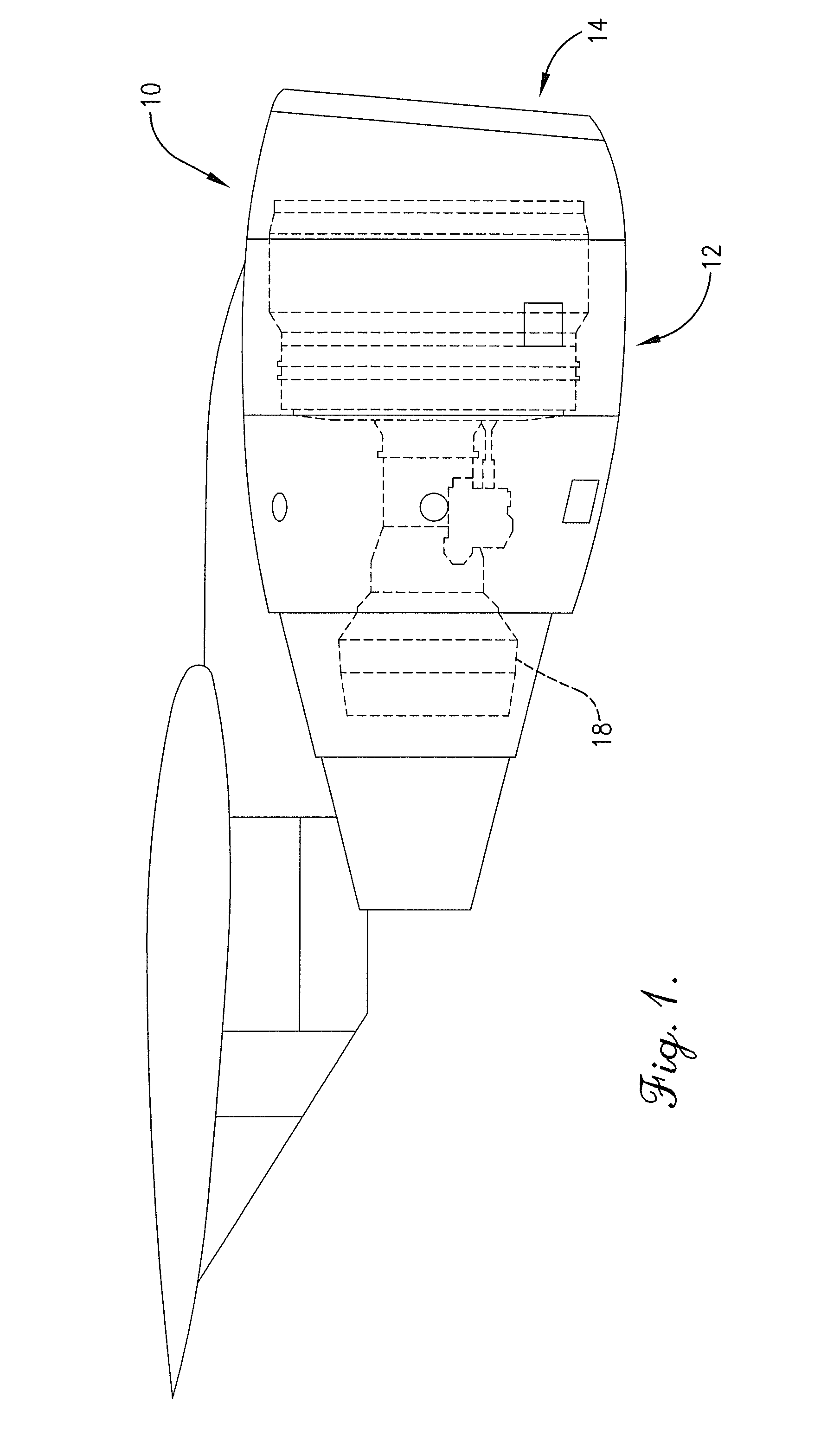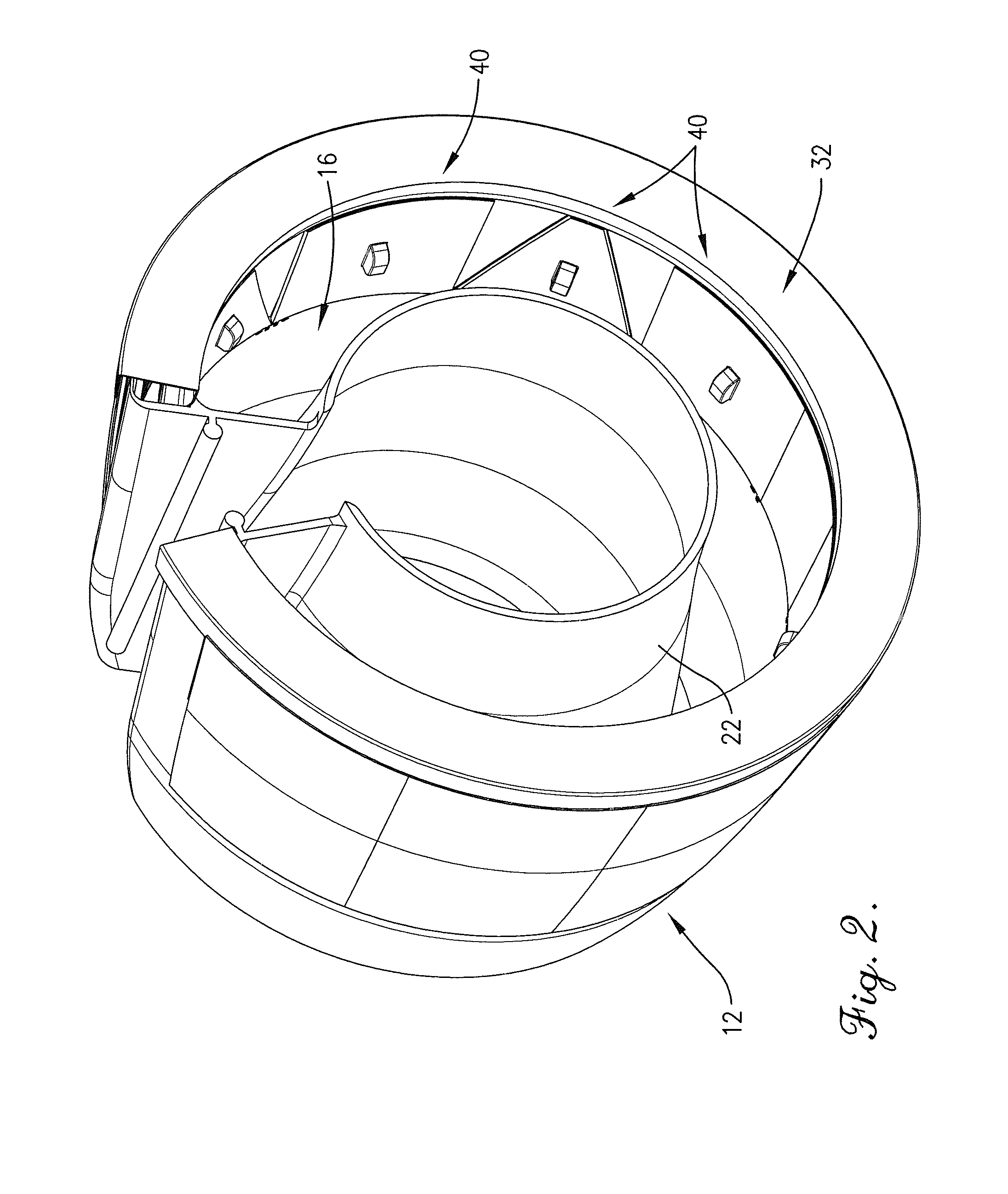Converging blocker door system for use with a thrust reverser
a technology of blocker doors and reversers, which is applied in the direction of vessel construction, marine propulsion, aircraft navigation control, etc., can solve the problems that the optimal reverse thrust cannot be achieved with the conventional thrust reverser blocker doors, and achieve the effect of reducing the weight of translating elements, and shortening the stroke length
- Summary
- Abstract
- Description
- Claims
- Application Information
AI Technical Summary
Benefits of technology
Problems solved by technology
Method used
Image
Examples
first embodiment
[0055]In the blocker doors 64, as seen in FIGS. 7-10, each blocker door 64 may include an inner flange 66 on the first side 54 and an outer flange 68 on the second side 56. The inner flanges 66 may have a complementary and reciprocal shape to the outer flanges 68. Generally, the inner flange 66 on the first side of one blocker door 64 overlaps the outer flange 68 on the second side 56 of an adjacent blocker door 40. When the blocker doors 40 are deployed, the blocker doors 64 are at maximum overlap such that the inner flanges 66 overlap the outer flanges 68 nearly completely, as seen in FIGS. 7-8.
[0056]The linking element 42 generally links the blocker doors 64 together to prevent the one blocker door 64 from decoupling from the adjacent blocker door 64, and guides the motion of the blocker doors 64 relative to one another during deployment of the thrust reverser 20. A first embodiment of the linking element 70 may include a cylindrical slider 72 and an attach pin 74 positioned ther...
second embodiment
[0058]In the blocker door 80, the first side 54 of one blocker door 80 may interleave with the second side 56 of an adjacent blocker door 80, as seen in FIGS. 12-15. The mating features 62 of the blocker door 80 may include a tongue 82 extending along the center of the length of the first side 54, and a groove 84, complementary to the tongue 82, formed by an upper tab 86 and a spaced-apart lower tab 88 extending along the center of the length of the second side 56. The tongue 82, the upper tab 86, the lower tab 88, and by extension the groove 84 all increase in width from the top edge 58 to the bottom edge 60. Each blocker door 80 may include a tongue 82 on the first side 54 and a groove 84 on the second side 56, such that the tongue 82 of one blocker door 80 fits into the groove 84 of the adjacent blocker door 80.
[0059]A second embodiment of the linking element 90 may include a threaded fastener 92, a horizontal roller 94, and a vertical roller 96, as seen in FIG. 16. The threaded ...
PUM
 Login to View More
Login to View More Abstract
Description
Claims
Application Information
 Login to View More
Login to View More - R&D
- Intellectual Property
- Life Sciences
- Materials
- Tech Scout
- Unparalleled Data Quality
- Higher Quality Content
- 60% Fewer Hallucinations
Browse by: Latest US Patents, China's latest patents, Technical Efficacy Thesaurus, Application Domain, Technology Topic, Popular Technical Reports.
© 2025 PatSnap. All rights reserved.Legal|Privacy policy|Modern Slavery Act Transparency Statement|Sitemap|About US| Contact US: help@patsnap.com



